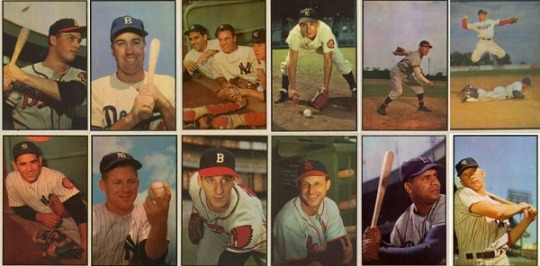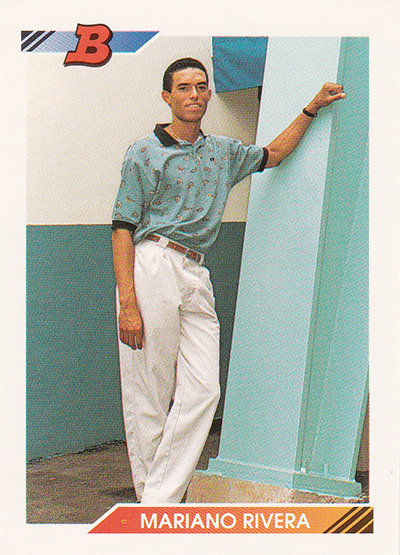#i just think if the nhl learned how to make their brand valuable and market it correctly maybe we'd reap the benefits
Text
i hate talking about the cap bc honestly the nhl is one of the few if not only leagues where you gotta count pennies and do cap gymnastics to ice a team meanwhile some players in other sports leagues are making connor mcdavid money to be on the BENCH
#like obvs the pandemic affected the cap n stuff too#but like my friends who watch the nba for example ask me how much the highest paid player makes in hockey#i tell them it's less than 20mil and they're like ??????#i just think if the nhl learned how to make their brand valuable and market it correctly maybe we'd reap the benefits#anyways it's 4am i digress lmfao#hannah babbles
63 notes
·
View notes
Text
Wax Pack Wednesday: A Throwback Disaster Becomes the Card of the Future

There’s a saying that what’s old is new again, and we’re certainly living in a wave of nostalgia right now. I’ve noticed it happens with every generation-- when people get in to their late 20′s and early 30′s, they want to turn back the clock about 20 years to the “simpler” days of childhood. But sometimes a desire to throw back to the past is ill-conceived, and how you react to the negative response will determine if you have a forgettable retro experience or you find your footing with a new audience.
In 1989, the Topps Company wanted to throw it back like every generation wants to. As the baseball card hobby had turned in to a full-blown industry, every manufacturer was looking to find the next big thing to cash in on. While the competition was introducing tamper-resistant packaging, premium card stock, and special inserts, Topps figured it could reach deep in to its intellectual property treasure chest to buck the trend. As discussed in a previous Wax Pack Wednesday column on 1952 Topps, when Topps finally slayed the competition in Bowman in 1955, Topps bought out Bowman and the brand, shuttering it to start a 25-year monopoly in the baseball card hobby. Ironically with increasing competition in 1989, Topps would reach to the Bowman brand to try to find a new audience of consumers.
In the late 1980′s, there was plenty of nostalgia for the 1950′s leftover from the “Happy Days” and “Grease”-soaked 70′s, and flush in “Platoon” and “The Wonder Years”, a new strange desire to revisit the 60′s was afoot. It seemed the time was right to reintroduce something from the past. Topps could revive the Bowman brand, and play off of the incredibly popular 1953 Bowman set which was becoming a favorite for hobbyists thanks to its scarcity and star power.

The simple 1953 Bowman set Topps tried to emulate in 1989.
Another reason why 1953 Bowman was so popular was its simplicity, which is ironic given Topps became more popular in the 1950′s with extra bells and whistles such as team logos and statistics on the back of a player’s card. In 1989, Topps figured the simplicity of the ‘53 set reset with 1989 players would be a hit for fans of nostalgia while also offering a pretty solid counter to the flashier cards of the competition.
The set was smaller and bigger... smaller in the sense that a complete set consisted of only 484 cards compared to the usual range of 660 - 800 cards in a set. But the set was bigger in that cards were 2 1/2″ X 3 3/4″-- a throwback to card sizes in the early 1950′s. The set featured only star players, but also had the cream of the crop of rookie cards-- Ken Griffey Jr., a card that Topps didn’t even include in its base 792-card set that year (it would be included in the 132-card “Traded” set featuring rookies that came on to the scene in 1989 as well as notable players traded during or just prior to the start of the season). Like the 1953 set, the front of the cards were pretty plain, showcasing close-up photos of players with a facsimile autograph. The back of the card was revolutionary-- rather than show the career stats of a player, the previous season’s stats were broken down in to “splits” form, showing how the player performed against each team he payed against in 1988.

Squint and you can see 1953 in 1989.
The set was rolled out to much fanfare, as the retail boxes exclaimed this was the “Comeback Edition!”, like a long strung-out rock star of years past finally sobering up and stumbling back on stage to sing his greatest hits. The problem Topps (and Bowman) experienced was that nobody seemed to be clamoring for a Bowman comeback. While the original Bowman cards of the 1940′s and 1950′s were highly sought after collectibles, this was seen as a bland addition to a quickly overcrowding market. The cards didn’t have the pizzazz that collectors wanted, and the over-sized card became difficult to store requiring collectors to buy different cardboard boxes and plastic pages to secure the best of the set. Topps’ gamble on the nostalgia market failed, as the throwback Bowman set got stomped by the forward-thinking premiere set from Upper Deck.
Topps tried to recover the Bowman brand in 1990 by reducing the card size to the standard card size, but again in an MC Hammer world Bowman was seen as Michael Bolton-- plain, dull, and not worth your time. The 1991 set was an improvement, but was still overlooked as the premium set era entered the hobby. By 1992, the Bowman set finally joined the rest of the bunch by looking more premium-- it featured glossy card stock as well as “rainbow foil” inserts. And while the set became more “mainstream”, it found its niche in the form of the rookie card. And when I say “rookie” card, I actually mean “3 or 4 years before the player sees the major leagues” card. Rookie cards had been a craze for decades, but Bowman hedged its bets on creating cards of teenage players just drafted or signed as free agents by teams. It may be a few years before you’d see these players in the bigs, but if you bet on them like Bowman did, you had an older (and presumably more valuable) rookie card compared to when all the other sets created a card.

22-year-old Mariano Rivera, as seen on his 1992 Bowman “rookie” card. The Hall of Fame relief pitcher wouldn’t make his Major League debut until May 23, 1995.
The “pre-rookie” card phenomena became a smash, and while the hobby faltered in the mid 1990s, Bowman’s unique niche as “the home of the rookie card” held up then as it does today. While numerous card brands have come and gone in the past 30 years, Bowman is still alive as it is essentially the rookie card branch of Topps. If you want to get your hands on the Rookie of the Year in 2023, you might want to buy a few packs of 2019 Bowman.
What as content creators and broadcasters can we learn from this failed “comeback” set that turned out to be a treasure trove of a very unique customer base?
Turn back the clock at your own peril: While everything that’s old is new again, there’s often a good reason why something was left in the past a few decades ago. Before you decide to throw it back 20 or 30 years ago, do your research on why consumers still attach themselves to a particular logo or look and feel of a brand. More importantly, ask yourself why they left the “old look” behind back then and haven’t looked for it since. Also ask yourself if a branding change in the past was made because someone at the corporate level just wanted a “modern change” or if the consumer base was no longer invested in the brand.
Measure yourself to the competition: When Bowman came back in 1989, Topps looked at the competition and figured the best counter to the competition was introducing a throwback-style card against the flashier and more progressive sets. That turned out to be the wrong assumption, as it happened the best counter was betting on hundreds of low-level minor league players one day making it to the major leagues. Which leads me to...
Expect the unexpected (and be open to it): Bowman could have just hammered the “old school look” square peg in to the round hole that made up the rest of the hobby. But by making that shift to a modern look with the niche target of future stars years before they became stars was the move Bowman had to make. It was also a smart move for Bowman’s parent company Topps-- Bowman could become “the rookie card set” while Topps’ base set handled current stars and other hobby trends. Keep this in mind if your organization has multiple levels/style of content being produced for different brands under one umbrella.
The “retro” market can get over-saturated too: I saw this firsthand while working with the Tampa Bay Lightning last season. While many NHL teams were introducing 3rd jerseys that were either straight-up replicas of old jersey designs or designs inspired by older threads, Lightning fans were screaming for a 3rd jersey that was essentially the Lightning’s original 1992 kit. While there were many good reasons for the team to do that, including a couple of throwback warm-up skates, the organization went in a completely different direction by introducing a more futuristic concept. The fans quickly embraced the new jersey, which is part of a bigger clothing line for the organization, and a concept I’m sure other NHL teams will mimic in the next few years.
Whether you’re old school or new wave, visit SammonSez.com to see how we can help navigate you to the next level of your broadcasting or content creation career!
0 notes